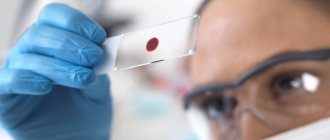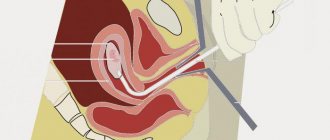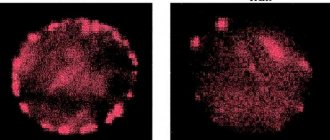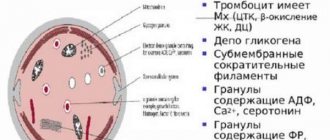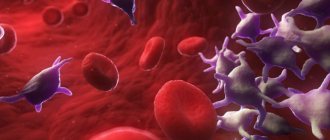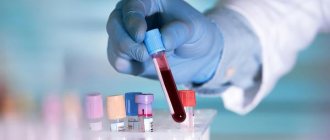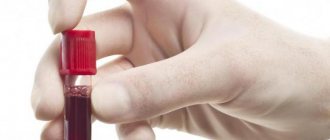Oncology belongs to the category of pathologies that are becoming increasingly common. Cancer is often diagnosed even in young men and women. The disease requires long-term drug treatment - chemotherapy.
The set of drugs used to eliminate cancer, in most cases, in addition to being beneficial, causes harm to the body. In particular, the composition of the blood changes dramatically. The amount of hemoglobin, leukocytes, and platelets decreases, which affects well-being.
To increase blood platelets quickly after chemotherapy, doctors recommend several effective methods.
Raising platelets with medications
During chemotherapy, thrombocytopenia is expressed in the formation of painless bruises and subcutaneous hemorrhages. If no measures are taken, the problem will be aggravated by bleeding from the nasal cavity and gums, as well as the appearance of blood in the stool and urine.
The most rapid increase in platelets is achieved when the patient takes special medications, namely:
- “Etamzilat” - you need to drink 3-4 tablets a day.
- "Derinat" - taken 2-4 times a day for 1-2 weeks. Among the contraindications, there is only individual intolerance to individual components of the drug. In addition, this substance is well tolerated by patients, which is why the development of side effects is practically not observed.
- "Thrombopoietin."
- "Vikasol" - the daily norm for adults is 10-30 milligrams, for children - from 4 to 15 milligrams.
- "Sodecor" - drink 1-3 times a day, and a single dose varies from 15 to 30 milliliters. It is not advisable to take it in case of arterial hypertension and individual hypersensitivity to its components.
- "Ascorutin".
The drug Ascorutin
Most of these medications have a number of contraindications for use and side effects, which can have an even more negative impact on a weakened body.
For example, an overdose of “Etamsylate” is expressed in:
- headaches and dizziness;
- hot flashes;
- paresthesias;
- nausea and vomiting;
- abdominal pain;
- stool disorder;
- allergic rashes;
- increase in temperature indicators.
Among the contraindications it is worth highlighting:
- thrombosis;
- acute form of porphyria;
- problems with blood clotting;
- childhood;
- period of bearing a child;
- breast-feeding.
"Vikasol" is prohibited for:
- hypercoagulability;
- thromboembolism;
- hemolytic disease of newborns;
- pregnancy;
- liver failure.
Side effects are presented:
- skin rashes and itching;
- hemolytic anemia;
- headaches;
- decrease in blood pressure;
- dizziness;
- jaundice.
An overdose of Sodecor is indicated by:
- increased blood tone;
- headache;
- allergic reactions.
Drug Sodecor
In addition to specific medications, the use of hormonal substances, glucocorticoids and vitamin-mineral complexes is indicated. Replacement therapy is selected for children and pregnant women. Only a doctor can tell you how to increase platelets.
Medical drugs
The choice of drug and therapeutic regimen depend on the severity of the patient’s condition and his individual characteristics. Drugs that increase PLT in the blood:
- Corticosteroid hormones (Hydrocortisone, Dexamethasone and Prednisolone). Promote the release of blood platelets and slow down the process of their utilization in the spleen.
- Immunostimulants and immunomodulators (Methyluracil, Immunoglobulin, Derinat, etc.). Neutralizes toxins, replenishes missing IgG antibodies, increases the rate of cellular regeneration, and stimulates humoral immunity.
- Hemostatic agents. The group is represented by several types of drugs:
- Antifibrinolytics intended to inhibit the process of fibrinolysis - dissolution of blood clots and resorption of blood clots (Aprotinin, Tranexamic acid, Aminocaproic acid, etc.);
- Coagulants that can increase blood clotting (Vikasol, Menadione sodium bisulfite, Phytomenadione);
- Medicines that reduce vascular permeability (Etamzilat, Rutin).
- General strengthening elixir Sodecor (water-alcohol tincture, including ten medicinal plants).
Synthetic glucocorticoid drugs used in the complex therapy of thrombocytopenia
Most drugs are not prescribed to women during pregnancy due to their teratogenic effects on the fetus. Self-medication of thrombocytopenia is prohibited. The use of medications is allowed only as prescribed by a doctor. Vitamin and mineral supplements should be selected taking into account the presence of magnesium, calcium, zinc, folic acid (B9), cyanocobalamin (B12).
Additionally
Rehabilitation of hematopoietic processes is often carried out after chemotherapy, since the aggressive nature of the treatment negatively affects the composition of the blood. To restore platelet balance, the following are used:
- medications that activate the production of flat blood cells;
- course therapy with recombinant thrombopoietin, a liver hormone that regulates platelet synthesis;
- vitamin B9 (folic acid), which has a regenerating effect on bone and other tissues of the body.
Dietary nutrition is mandatory. The use of traditional medicine is allowed if there are no individual allergies and contraindications from the underlying disease (for the treatment of which a chemotherapy method was used).
Diet therapy
You can increase platelets in the blood after chemotherapy by following simple nutritional recommendations. For each person, an individual diet of food necessary to restore the body is developed.
Experts recommend enriching the menu with ingredients rich in plant proteins. Nutrition after chemotherapy must be balanced and healthy, and also have a beneficial effect on the circulatory system.
The following foods will help increase platelets in the blood:
- vegetarian first courses;
- bakery products made from whole grain flour;
- fatty fish and seafood;
- seaweed;
- lean varieties of meat;
- nuts and dried fruits;
- offal;
- pumpkin seeds;
- legumes and mushrooms;
- peaches and raspberries;
- beets and carrots;
- apples and cabbage;
- potatoes and bananas;
- greens and eggs;
- milk products;
- pomegranates and melon;
- cereals, in particular buckwheat and rice;
- herbal teas and cocoa on water.
It is important to reduce or eliminate ingredients that thin the blood.
The following products are not suitable for increasing platelets:
- ginger;
- citrus fruit;
- olive oil;
- blueberry;
- chokeberry;
- alcohol;
- garlic;
- cinnamon and other spices.
In addition, to increase platelet levels in a child or adult, it is necessary to minimize the daily intake of salt, as well as fried and spicy foods. All other nutritional recommendations and information about when to follow a diet can only be provided by a clinician.
Signs of reduced levels
The doctor concludes that platelet levels are decreasing based on a blood test. During the treatment they are done several times, which allows you to track the number of blood cells responsible for blood clotting. Normally, in a healthy person their number is 180-320 x 109/l.
The following symptoms may indicate that there has been a decrease in the number of blood cells:
- bruises and hematomas appear on the skin for no apparent reason, which do not go away for a long time;
- Gums constantly bleed;
- the nose often bleeds;
- it is impossible to stop the oozing blood for a long time even from a small wound;
- bloody stools and blood in the urine appear;
- Women experience prolonged, heavy menstruation.
The appearance of even one sign may indicate that the composition of the blood has changed for the worse, and it is necessary to take measures to increase platelet levels.
Important information: What does it mean to have a reduced average platelet volume in the blood of an adult?
Increase with folk remedies
Another way to increase platelets in the blood involves the use of folk remedies, which involve preparing medicinal drinks from various medicinal herbs and plants at home.
This method of restoring the normal concentration of small blood platelets has a number of advantages:
- no doubt about the composition of decoctions and infusions - this is due to the fact that the person prepares the medicinal drink independently;
- low cost of components, and some of them can be grown in your own garden or at home;
- complete absence of side effects, but only with reasonable use of such drugs;
- a minimum number of contraindications, the main of which is individual intolerance to any plant;
- Possibility of use by children and female representatives during pregnancy, but only under the full supervision of the attending physician.
The most effective folk remedies:
Nettle
- nettle;
- Rowan;
- Sesame oil;
- chamomile flowers;
- peppermint leaves;
- shepherd's purse;
- verbena;
- kidney knotweed;
- beet juice;
- Oak bark;
- yarrow;
- strawberries;
- rose hip.
The above herbal ingredients can be used not only in their pure form, but also as an herbal tea. You need to drink healing drinks three times a day before each meal. The duration of therapy with folk remedies is on average 10-14 days, but sometimes it can last 1 month.
It is very important to consider that before using this method of increasing red blood cells in the blood, you must consult your doctor. Only a clinician will be able to identify whether a person has an individual intolerance to a particular component.
Blood counts after chemotherapy
During chemotherapy treatment, the patient is constantly prescribed blood tests to monitor the slightest changes in the composition of the blood. Usually, under the influence of toxins, the blood formula changes significantly.
- Leukocytes. The level of leukocytes during chemotherapy treatment is greatly reduced, which can be very dangerous for the patient, because his immune status drops sharply. As a result, the patient becomes defenseless even against the simplest microorganisms and infectious agents. Therefore, increasing white blood cells after chemotherapy is an important and necessary task.
- Hemoglobin. Chemotherapy has a depressing effect on hematopoietic functions (hematopoiesis). The patient experiences a sharp drop in hemoglobin to critical levels and develops severe anemia. Hemoglobin drops especially after a combination of radiation and chemotherapy or when undergoing a repeated course of chemotherapy. Normalizing the hemoglobin level significantly increases the patient’s chances of a speedy recovery, because the survival rate of cancer patients directly depends on hemoglobin.
- Red blood cells. Since toxins during chemotherapy inhibit hematopoietic processes, the content of red blood cells in the blood of a cancer patient also decreases. He develops pronounced erythrocytopenia, which is accompanied by a sharp loss of strength and rapid fatigue.
- Platelets. Platelet counts also decrease, and acute thrombocytopenia develops. This condition is critically dangerous for the patient, since the patient’s blood clotting ability is practically zero and the slightest wound can cause severe bleeding with large blood losses. Bruises appear on the patient's skin, bleeding occurs from the gums and nose, as well as bleeding in the digestive tract.
As you can see, the blood picture becomes very dangerous for the health of a cancer patient, so it is necessary to take urgent measures to restore the blood after a chemotherapy course of treatment.
Other ways to increase platelets
Reduced platelets after chemotherapy, in addition to the above methods, can be increased by using recommendations that actively prevent the development of hemorrhages.
To prevent the indicators from falling even lower, it is necessary:
- Avoid taking Aspirin - drugs that contain acetylsalicylic acid are also prohibited;
- refusal to use dental floss for oral hygiene;
- men should use electric razors when shaving;
- clearing the nose of mucus by lightly blowing;
- after injections, it is necessary to apply pressure bandages until the blood stops completely;
- women are recommended to take medications that inhibit the onset of menstrual periods;
- surrounding yourself with soft things in everyday life that cannot cause wounds, bruises or cuts;
- Exercise extreme caution when working with scissors, knives and other sharp objects.
In addition, it is worth completely giving up addictions, leading a moderately active lifestyle and undergoing regular medical examinations, which is especially important for patients undergoing chemotherapy.
Why do platelets fall?
The main reason why blood composition changes during chemotherapy is the use of potent drugs during treatment. Because therapy can take months or years, as with lung cancer, medications have long-lasting side effects.
Many medications used to treat cancer have a toxic effect on the body's cells, particularly the bone marrow. Disruption of this process leads to a rapid drop in the level of platelets in the blood.
Is it dangerous
A large decrease in the number of clots leads to thrombocytopenia. Therefore, there is always a risk of heavy bleeding. Even a small abrasion or scratch can lead to severe blood loss, which is life-threatening.
In addition, internal bleeding may occur, which does not manifest itself externally - gastric, intestinal, intrauterine. If you do not pay attention to this in time, death may occur.
Therefore, a critical decrease in platelet levels is dangerous and requires immediate treatment by all available methods.
Chemotherapy and platelets – White Clinic
| Chemotherapy and platelets |
| //md-isr.com |
| February 11, 2012 |
| From the previous chapter, you learned why antitumor drugs (as well as radiation therapy) primarily affect leukocytes. Although it is humanly incomprehensible and offensive why they disliked these humble workers. Chemotherapeutic agents are more tolerant of platelets, which are also called blood platelets, affecting them to a much lesser extent. Platelets play a vital role in stopping bleeding: when blood vessels are damaged, platelets accumulate at the site of injury, as if sticking together, releasing substances that narrow the blood vessels and cause the formation of a blood clot, which prevents further bleeding. READ ALSO - The clinic offers a range of services After operations, injuries and other unpleasant moments that cause bleeding, a protective reaction of the body is observed: the number of platelets in the blood increases. However, in some cases, an increase in the number of platelets can lead to the formation of blood clots in the lumen of blood vessels. This phenomenon is often observed with varicose veins or with their inflammation. The normal platelet count in adults is 180,000 – 320,000 and even in healthy people is subject to significant fluctuations. Only some drugs (mutamycin, dactinomycin, nitrosourea derivatives) seriously affect platelets, and even then not immediately, but 3-6 weeks after the end of treatment, accumulating their hostility from course to course, ultimately achieving chemotherapy for some time. time was cancelled. Why the above drugs have such an irresistible attraction to blood platelets is unclear. Maybe they remind them of red flags? There is only one conclusion: in regularly performed blood tests, the number of platelets must also be counted. There are 5 grades of platelet toxicity from chemotherapy: from grade 0 (platelet count more than 100,000) to grade 4 (platelet count less than 25,000). A decrease in platelet count is called thrombocytopenia. What is the main danger of thrombocytopenia? This is, first of all, the possibility of bleeding. The first signs appear in the form of painless hemorrhages into the skin (bruises), then bleeding from the mucous membranes - from the gums, nose, and gastrointestinal tract. In blood tests with these phenomena, a decrease in the number of platelets to 25,000-50,000 is observed. Be sure to tell your doctor if you develop bruising or spots under the skin. Any “unreasonable” bleeding from the gums or nose is a reason to consult a doctor. Also report any cases of blood in the urine or stool, or black, tarry stools. All this with a low platelet count can lead to serious consequences. Treatment measures for thrombocytopenia consist of actively preventing bleeding and are as follows: Avoid taking aspirin and aspirin-containing medications. Avoid using dental floss. Men are better off using an electric razor. Avoid actions and movements that could cause injury. If you need to blow your nose, do it extremely carefully. Clear your nose by blowing lightly; never use your fingers. Avoid using enemas and suppositories. Apply pressure bandages after injections, especially intravenous ones, until the bleeding stops. Women should talk to their doctor about using birth control pills or medications that prevent menstruation. (Danger of severe bleeding). * Surround yourself with soft things that will not cause you cuts, bruises, etc. * Be extra careful when handling knives, scissors or other tools. * Be careful not to burn yourself, especially when using the iron and cooking. Wear a thickly lined oven mitt if you must reach into the oven or oven. * Avoid gymnastics, sports and other strenuous activities that could cause bodily injury. * Use thick gloves when excavating in summer cottages or when working with garden plants. Beware of roses and plants with thorns and thorns. * Walk with extreme caution on slippery roads; In icy conditions it is generally better not to leave the house. * It is not advisable to use suppositories, with the exception of hemostatic suppositories for bleeding hemorrhoids. As we have already said, the main danger of thrombocytopenia is bleeding. Therefore, most treatment measures are aimed at preventing or stopping bleeding. When the platelet count drops below 25,000, a transfusion of thrombocyte mass is recommended. There are few therapeutic drugs for platelet recovery. These are hormonal drugs: hydrocortisone, dexamethasone, triamcinolone. Doses depend on the degree of thrombocytopenia. The drug dicinone (etamsylate) reduces bleeding and has a weak stimulating effect on platelet growth. It is prescribed 1 tablet 3 times a day before meals for 7 days. If longer-term use is necessary, you should regularly take blood tests for a coagulogram. Erythrophosphamide, in addition to increasing the number of platelets, is also used for anemia (anemia). If there is no powder, take a ready-made solution of aminocaproic acid, 2 tablespoons 3 times a day after meals. Vikasol tablets also have a hemostatic effect. We recommend taking 1 tablet 3 times a day before meals for 3-4 days in a row, then take a break for 4 days. Ascorutin tablets strengthen the walls of blood vessels and are also used for bleeding. Among herbal preparations, nettle leaves are used to stop bleeding: briquettes are produced from crushed nettle leaves, divided into 10 cloves. One slice is poured into a glass of boiling water, left for 10 minutes, filtered, and cooled. Take 1 tablespoon 3 times a day. Lagochilus tablets and tincture, in addition to the hemostatic effect, cause a laxative effect in some patients. The tincture is taken 25-30 drops before meals 3 times a day. Your doctor may recommend other herbs. For cuts, in addition to pressure bandages, a hemostatic sponge should be used. For hemorrhoidal bleeding, “antiseptic biological suppositories” are recommended, which include hemostatic, antiseptic and analgesic agents. If blood “comes out” from the nose, in addition to the above-mentioned hemostatic agents, instill naphthyzine - it causes a narrowing of the nasal vessels. Dietary measures for reducing platelets have been little studied. Information about the benefits of certain products is sporadic and extremely uncertain. We recommend eating more fruits and fresh vegetables containing vitamin C in combination with a nutritious protein diet. Chemotherapy.Illustrations from the site: © 2011 Thinkstock. |
Source: //www.whiteclinic.ru/chimioterapiya/chimioterapiya-i-trombotsiti
Reasons for the decline
Chemotherapy drugs that exclusively affect only cancer cells have not yet been developed. These drugs also have a depressing effect on healthy tissues, and the most dangerous thing is inhibition of the synthesis of formed elements of red bone marrow. A negative effect on megakaryocytes—precursor cells—leads to a drop in platelet levels below 150 thousand in 1 μl of blood.
The first course of chemotherapy is often marked by a rapid decrease in the amount of all blood elements with the development of pancytopenia, which adversely affects the further treatment of the patient.
Return to contents


